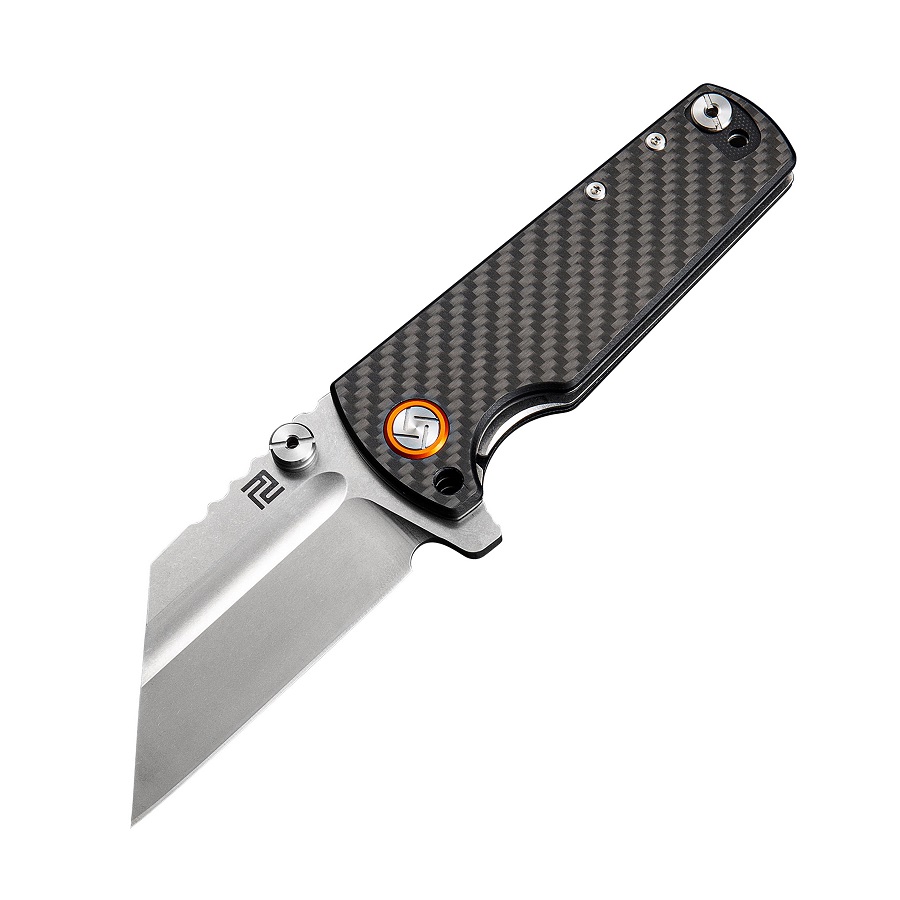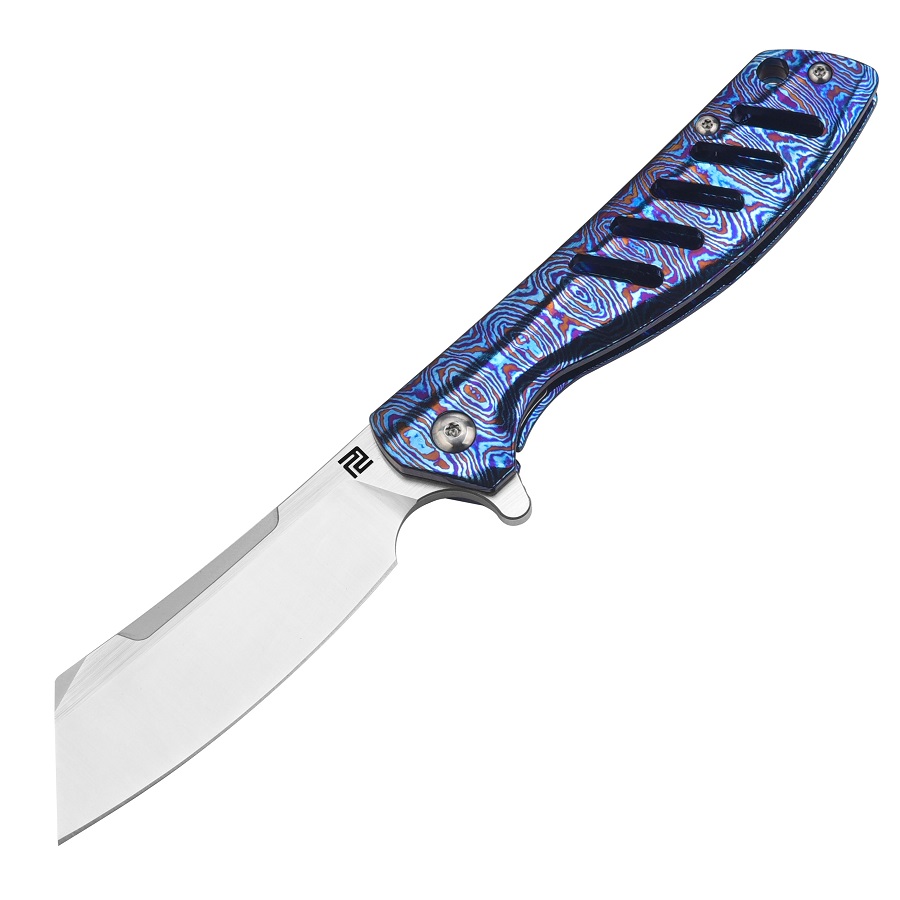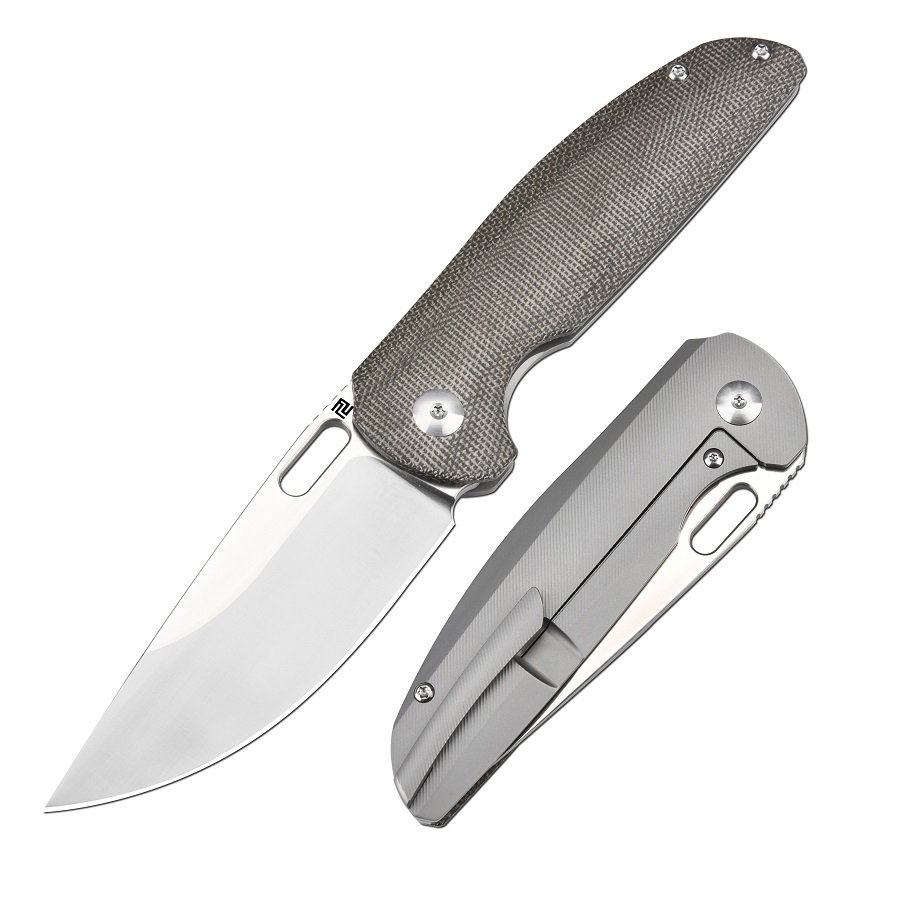The Importance of Quality Cutlery for Culinary Success
As a chef, your cutlery is your partner in the kitchen. High-quality knives are essential. They allow for precision and ease in every slice and dice. Artisan cutlery takes this to the next level. Handcrafted, these knives offer unrivaled sharpness and durability. Here are key reasons why investing in quality cutlery is crucial for your culinary success:
- Precision and Consistency: Artisan knives provide control. Their sharp blades cut with accuracy. This ensures consistent food preparation.
- Speed and Efficiency: Sharp knives let you work faster. They minimize the effort required to cut through ingredients.
- Safety: A dull knife can slip and cause injuries. Artisan cutlery, kept sharp, reduces this risk.
- Longevity: Artisan knives, made from high-grade materials, last longer. They withstand the rigors of daily kitchen use.
- Enhanced Flavors: Clean cuts can maintain the integrity of ingredients. This can result in better flavors in your dishes.
- Professionalism: Quality cutlery reflects your commitment to the craft of cooking. It impresses both colleagues and customers.
In summary, quality artisan cutlery is an investment in your culinary art. It impacts your food, safety, and reputation. Embrace the craftsmanship of artisan knives to reach your full potential as a chef.
 A Brief History of Artisan Cutlery Craftsmanship
A Brief History of Artisan Cutlery Craftsmanship
The story of artisan cutlery dates back centuries. It began with skilled craftsmen shaping metal by hand. They created unique knives for cooking and dining. These craftsmen valued quality and detail over mass production. Their tools were personal, with designs passed down through generations.
Artisan cutlery comes from many traditions. In places like Japan, craftsmen made swords and later turned their skills to kitchen knives. In Europe, cities like Sheffield in the UK became known for their cutlery. They combined local resources with craft to make fine knives.
Over time, the values of artisan cutlery remained the same. Even now, artisans use traditional methods. They melt and forge metal. They shape it on an anvil and sharpen it by hand or with simple tools. Artisans take pride in creating pieces that are both beautiful and functional.
Each piece of artisan cutlery tells a story. It reflects the culture and history of its makers. Chefs worldwide treasure these knives. They honor the craftsmanship that goes into making them. Artisan knives are not just tools; they are culinary heirlooms.
The craft of making artisan cutlery continues to evolve. Today’s artisans combine old techniques with new materials. Yet, they preserve the heart of the tradition. Handmade, durable, and with a personal touch, artisan cutlery stands out. It contrasts starkly with factory-made knives.
In conclusion, artisan cutlery has a rich history. It showcases the dedication of skilled craftspeople. These knives are more than just sharp blades. They carry the legacy of centuries of craftsmanship.
Essential Types of Artisan Knives for Every Chef
For a chef, the knife collection is the backbone of the kitchen. Artisan cutlery encompasses a variety of knives, each with its purpose. Here is a list of essential artisan knives that every chef should consider for their kitchen arsenal:
- Chef’s Knife: This all-purpose knife has a broad blade that curves upwards to a point. It’s perfect for chopping, dicing, and slicing. Its versatility makes it a must-have in any collection of artisan cutlery.
- Paring Knife: Small and sharp, the paring knife excels in peeling and other precision tasks like deveining shrimp or removing seeds from a jalape?o.
- Bread Knife: With a serrated edge, a bread knife glides through crusty bread without crushing it. It can also be used for soft fruits and vegetables.
- Utility Knife: Longer than a paring knife but shorter than a chef’s knife, the utility knife is great for slicing smaller meats and vegetables.
- Boning Knife: Its thin, sharp blade is designed to separate meat from bone, making it a valuable tool for chefs who prepare their meat cuts.
- Santoku Knife: Originating from Japan, this knife is known for its three virtues: slicing, dicing, and mincing. Its scalloped blade helps to release thin cuts and sticky food.
- Carving Knife: For slicing thin cuts of meat, like chicken, pork, or beef, a carving knife has a long, sharp blade that can handle larger items with precision.
- Cleaver: For tougher jobs like cutting through bone or hard vegetables, a cleaver’s heavy, wide blade can be indispensable.
Having the right artisan cutlery for the task at hand not only improves the quality of your food but also enhances your efficiency. Invest in these essential knives and feel the difference in your culinary creations.
How to Choose the Right Artisan Cutlery
Choosing the right artisan cutlery can elevate your culinary skills and add joy to your cooking experience. Here are key factors to consider when selecting the perfect knife made by artisan craftsmen.
- Identify Your Needs: Assess what types of food you often prepare. Pick knives that match the tasks you do most.
- Evaluate Quality: Look for high-grade steel blades and solid, comfortable handles. Good balance and weight matter too.
- Craftsmanship: Seek out knives hand-forged by artisans. Their attention to detail ensures quality and durability.
- Handle Feel: The grip should feel natural in your hand. Test different handles to find the best fit.
- Blade Shape: Choose a blade shape suited to your cutting style. Remember, the right shape enhances precision.
- Size Matters: Ensure the knife’s size isn’t too large or small for your hands. Comfort is key for safe, efficient use.
- Maintenance: Consider how much care each knife needs. Some may require more upkeep than others.
- Budget: Artisan cutlery can be more costly. However, investing more often means better quality and longer life.
After you’ve considered these factors, research different artisans. Read reviews and learn about their reputations. Visit kitchenware stores to feel the knives in your hand. Sometimes, the right knife chooses you. When it fits just right and feels like an extension of your arm, you’ve found your artisan cutlery.
Caring for Your Artisan Knives: Cleaning and Maintenance Tips
Caring for artisan cutlery is crucial to keeping your tools in top shape. Here are simple, yet effective cleaning and maintenance tips to ensure your knives last a lifetime.
- Clean After Use: Immediately rinse your knife with warm water after use. It prevents food from sticking and causing damage.
- Use Gentle Soap: Apply mild dish soap to clean the blade. Avoid harsh chemicals that can harm the metal.
- Dry Thoroughly: After washing, dry your knife with a soft towel. Water spots can lead to rust on the blade.
- Regular Honing: Keep your knife’s edge aligned with regular honing. Use a honing rod before each use for best results.
- Proper Storage: Store your knives in a knife block or on a magnetic strip. It protects the blades from damage.
- Avoid Dishwashers: The high heat and harsh detergents in dishwashers can damage your knives. Always wash them by hand.
- Oil the Handle: If your knife has a wooden handle, oil it regularly. This keeps the wood from drying and cracking.
- Sharpen When Needed: Have your knives professionally sharpened or learn to do it yourself. A sharp knife is safer and more effective.
- Inspect Regularly: Look for signs of wear or damage. Addressing small issues can prevent bigger problems down the line.
By following these artisan cutlery care tips, your knives will remain sharp, safe, and beautiful. Remember that how you maintain your knives is a reflection of your respect for the craft. Treat them well, and they will serve you well in creating culinary masterpieces.
Sharpening Your Artisan Cutlery: Methods and Techniques
Keeping your artisan knives sharp is key to their performance. Here are simple sharpening methods and techniques:
- Use a Whetstone: Soak a whetstone in water for about 10-15 minutes. Start with the coarse side. Hold the knife at a 20-degree angle to the stone. Glide the blade in an arc, from base to tip. Repeat on the finer side for a polished edge.
- Honing Rods: Before each use, run the knife blade along a honing rod. This realigns the edge, keeping it sharp.
- Sharpening Steels: Unlike honing rods, sharpening steels remove metal. They sharpen a dull edge. Use light pressure and maintain the correct angle.
- Professionals: If you’re unsure, take your knives to a professional sharpener. They have the skills and equipment for a precise edge.
- Consistency: Sharpen regularly. How often depends on use. For heavy use, sharpen every few months. For lighter use, once a year may be enough.
By mastering these techniques, you’ll ensure your artisan knives cut with ease and precision.
The Role of Artisan Cutlery in Global Culinary Traditions
Artisan cutlery is not just a chef’s tool, but a key part of culinary cultures worldwide. Each country and region has its own unique style and method of crafting knives, which reflects in their food traditions and preparation methods. Here are various ways artisan cutlery shapes culinary practices around the globe:
- Cultural Significance: In many cultures, knives are more than tools. They are symbols of heritage and artistry. For example, the Japanese Santoku is integral to their food preparation, mirroring the precision and discipline of Japanese cuisine.
- Regional Techniques: The design of artisan knives often suits local cooking methods. Italians might favor thin, sharp blades for slicing cured meats, while a cleaver is preferred in Chinese kitchens for chopping vegetables and meats.
- Material Influence: The materials used in artisan cutlery, like the steel from specific regions, can influence the preparation and taste of food. Knives from certain areas are prized for their ability to retain sharpness or enhance flavor.
- Customized Craftsmanship: Artisans often tailor cutlery to a chef’s personal style, affecting how they cook and present their dishes. This customization allows chefs to enhance their technique and culinary expressions.
Artisan cutlery is tied deeply to the identity of cuisines across the world. They aid in preserving traditions and celebrating the diversity of global culinary arts. Embracing artisan knives means respecting the cultural significances that come with every chop, slice, and dice.
Artisan Cutlery vs. Mass-Produced Knives: What’s the Difference?
Choosing between artisan cutlery and mass-produced knives can be a tough decision. Here are the main differences to help guide you:
- Craftsmanship: Artisan knives are handcrafted with precision and care. Mass-produced ones are made with machines, faster but with less attention to detail.
- Materials: Artisans often use high-quality steel and unique materials for handles. In contrast, mass-produced knives might use lower-grade steel and standard materials.
- Durability: The superior materials and methods used in artisan cutlery generally make them more durable. Factory knives may not last as long.
- Performance: With artisan knives, you get a blade designed for optimal performance. Mass-produced knives may not have the same edge retention or balance.
- Uniqueness: Each artisan knife is unique, reflecting the skill of its maker. Factory knives are uniform, with no individual character.
- Cost: Artisan knives can be more expensive due to the time and skill involved. Mass-produced knives are often cheaper due to economies of scale.
- Repair and Maintenance: Artisans can often repair or restore their knives. Mass-produced knives are usually replaced instead of repaired.
In summary, artisan knives offer a level of quality, durability, and character that mass-produced knives can’t match. They are an investment in your culinary art, enhancing your cooking experience with every use.




